Welcome to the ultimate guide on Philodendron Indoor Plant Care! Whether you’re a seasoned green thumb or just starting out in your indoor plant garden, this guide is designed to help you achieve thriving and lush philodendrons in your home.
With various species and each of their unique characteristics, philodendrons are a versatile and stunning addition to any plant collection. This guide has easy tips and tricks to ensure any type of philodendron grows well and looks pretty in your home.
We’ll also dive into some fancy plant stuff like propagation, fertilizing, and repotting. You’ll learn to increase your philodendron collection so you have a steady supply of them. We’ll also discuss the best plant food and when to feed your plants to achieve the best growth.
And when your philodendrons get too big for their pots, we’ll guide you on how to move them to a bigger space. With all these helpful tips, you’ll become a philodendron pro, and your plants will be the stars of your indoor garden. Don’t forget to share this guide with your friends and family who want to grow awesome philodendrons, too!
What Is a Philodendron
Image credit: Huy Phan
A Philodendron is a fantastic universal plant many love to have at home. They come in all sorts of species, like the fancy Philodendron erubescens ‘pink princess’, Philodendron rugosum, Philodendron erubescens, Philodendron ‘birkin,’ and other beauties. These plants have elegant leaves and are easy to take care of, which makes them great houseplants.
Philodendron Quick Facts
While it might be one of the most common plants in households, a philodendron comes with its own set of quirks. Here are some quick facts about the plant:
- The botanical name of the species is Philodendron.
- The plant’s vines can reach a height of 3 feet (0.9 m).
- Philodendrons can spread for up to 6 feet (1.8 m).
- The best season to plant it outdoors is spring, while indoors, you can grow it whenever.
- Preferable soil requirements are light and well-draining soil.
- The plant prefers non-direct sun exposure.
Types of Philodendrons
When searching for picture-perfect houseplants to decorate your home with, you’ll encounter two types of philodendrons: climbing and upright. If you’re looking for a vine-like plant, climbing philodendrons is the way to go. Their leaves are also smaller in comparison, so they work great with spaces where they can climb up a bit but have no need to expand to the sides. Another type is the upright. They’re bigger, take up more space, and can become the center of attention in your home.
Here are some of the most popular Philodendron species:
Heartleaf Philodendron
Image credit: shadow_work_
Philodendron hederaceum is perhaps the most popular choice for growing indoors. The plant has heart-shaped leaves and is extremely easy to care for.
Philodendron Micans
Image credit: groundedplantfloralco
Philodendron hederaceum var Hederaceum has green leaves with a pastel shade of pink, making it a perfect mix of classic and fancy philodendrons.
Lemon Lime Philodendron
Image credit: sunny_saguaro
Philodendron hederaceum ‘Lemon-Lime’ is still sporting the heartleaf leaf shape. This plant introduces neon green and yellow accents to your space, brightening your home.
Philodendron Birkin
Image credit: riversofyarrambat
Philodendron ‘Birkin’ is a stylish hybrid with a climbing growth principle. Bigger green leaves with patterns make it a perfect indoor plant for larger spaces.
Philodendron Erubescens
Image credit: terrascapesllp
Philodendron erubescens is commonly called a blushing philodendron, as the back of its leaves can show various shades of red.
Philodendron Black Cardinal
Image credit: soup-lobbing-ninja
Philodendron erubescens ‘Imperial Green’ is a low-maintenance plant, with leaves changing color as they grow. They start out with shades of brown, then turn to the classic green, and eventually—black.
Pink Princess Philodendron
Image credit: tinysnail
Philodendron erubescens ‘Pink Princess’ has dark green leaves with pink patches, making this plant one of the rarest and most expensive philodendrons. A true nature’s phenomenon!
Philodendron Calkins Gold
Image credit: dabriellaa
Philodendron erubescens ‘Calkins gold’ is a rare climber; its leaves have a light green shade with little yellow spots that will add a lot of light to the room.
Philodendron Verrucosum
Image credit: just4myplants
Philodendron verrucosum is a fancy way to add class to your home. Red stems and green leaves with lime veins will add warm color to any space.
Philodendron Silver Sword
Image credit: plantisetjava
Philodendron hastatum ‘Silver Sword’ is another one of the rarest species that might be hard to come by, as its silver leaves provide a unique look to the plant. It’s easily one of the most interesting and unusual plants.
Philodendron Care Tips
Having a correct plant care routine can make your plants flourish. Philodendrons aren’t difficult to care for; however, basic but essential practices are still needed to receive the best results. Whether you’re a seasoned plant enthusiast or are just starting out in this adventure, we hope that you’ll discover something new in these tips.
Light
Image credit: thefartsmell
Philodendrons will thank you if you provide them with enough, but not too much direct sunlight. Naturally, they grow in a tropical setting, so they’re almost always under the rooftop of trees. So, put them in a spot where they’ll get some gentle sunbeams, but won’t get too hot. If your plant’s leaves turn yellow, the plant might be getting too much light. However, if there’s a lot of space between the leaves and the growth pace is slow, it’s a sign that the plant might need more sunlight.
Soil
Image credit: Gloomy_Lack6793
Philodendrons thrive in loose soil with ample nutrients. Most commercially available soils should work just fine; just make sure there are a lot of natural elements in them. Coco-coir, peat moss, and shredded leaves will all enhance the quality of your soil.
You’ll also want soil that retains water but allows excess to drain, so the roots don’t get soggy. If water drains too fast, it might be a good idea to repot your plant into a mix with more compost and less drainage.
Water
Image credit: Anna Shvets
Water your philodendrons when the soil is almost completely dry. If the leaves start to sag, it’s a sign they’re lacking water. If you can’t tell whether to water the plant, just wait a little more. Also, while big plants can withstand periods without water, the little ones do need regular sips until their roots grow strong enough.
When watering, do so slowly with lukewarm water, and let any extra water to drain. If the soil looks dry and hard, soak the roots in a bucket of water for about 10 minutes. This will help loosen up the soil.
Temperature and Humidity
Image credit: itsssmedusa
Philodendrons are alike to humans in a way—they prefer a similar temperature range as us. Try to keep it around 65–75°F (16–23°C) for the best possible results. If it so happens that the temperature drops below 55°F (15°C), your plant might slow down its growing process. If kept so for long, it might suffer long-term harm.
When it comes to humidity, it’s almost the same case. While philodendrons prefer higher humidity, they can do just fine in your regular household setting. Something around 50% will be ideal, but try to keep it the way you prefer—the plant will only thank you for it.
Fertilizer
Image credit: Antony Trivet
Philodendrons grow quite fast, and some grow throughout the whole year. In turn, a regular supply of fertilizer is preferred. For plants with distinguished growing seasons, use a weaker, diluted mix (¼ the usual dosage) of liquid plant food every two weeks during the plants’ growing phase. As winter comes, give them a break from the food.
For those plants that grow continuously throughout the year, feed them with a ¼-strength diluted plant food when you see lots of new leaves. Or, you can sprinkle some worm castings or rich compost on the soil. That will keep your indoor plant strong and healthy!
How to Grow Philodendron From Seed
Image credit: Karolina Grabowska
Most philodendrons are kickstarted from leaf stem cuttings or purchased as pre-prepared plants. However, if you’re keen on growing from seeds, try planting them at a depth about twice the diameter of the seed’s size in a high-quality seed starting or potting mix. Ensure the soil stays consistently moist and warm, and then be patient. It may take up to a month for the seeds to sprout.
Once they do, and the plant has at least one set of true leaves, transfer it into a container with good drainage holes, filled with quality potting mix. Don’t use an excessively large container, as overly large pots can hold too much moisture and lead to root rot. As the plants grow and roots fill the pot, you can then move them to the bigger pot.
Potting and Repotting Philodendrons
Image credit: BigBoyPlants
Before setting out to repot your philodendron, remember that the plant is mildly toxic, so it is advised to wear gloves. Once you have safety taken care of, it’s time to choose the pot. Look for good drainage holes and a suitable size—remember, as the plant grows, it will need bigger pots. Before repotting, pick a container around 2 inches larger in diameter than the plant, but keep in mind that water dosages will also change accordingly.
When setting out on this repotting quest, prepare your workspace. It can get messy—make sure your furniture and decorations are protected.
To make the whole process easier, water your plant well the day ahead. Moist soil can make it less complicated to remove the plant. This will reduce stress both for the plant and you.
When removing the old pot, loosen the soil on the edges in a gentle manner, and then carefully pull the plant out. Take this moment as an opportunity to inspect the roots—trim any soft or diseased ones to keep the philodendron healthy and strong.
Now comes the main event: it’s time to move your plant to its new home. Get your new pot, fill it a couple of inches with potting soil, and place your plant inside. After you manage to get the alignment down, fill with the rest of the pot with soil. Make sure to press down the soil regularly to avoid any air gaps.
And to finish it off, water your philodendron with plenty of water. This will help the plant to get used to its new home and continue growing.
Pruning Philodendrons
Image credit: JoyUsGarden
Philodendrons are pretty low-maintenance, but sometimes, they can benefit from a little haircut. While the most immediate results you’ll see will be in looks, pruning can be beneficial in other areas, too. Your plant will give you signs of what needs to be fixed, and it’s a matter of correctly interpreting those signs.
Pro tip: While pruning can be done throughout the year, it’s recommended to do so during the plant’s most active growth stage—spring or early summer. This will allow you to see the results of your work as soon as possible.
If your philodendron has discolored, buggy, or otherwise sick-looking leaves, that’s a sign that you should snip them off. While the looks might suffer from the start, the plant should sprout back into life looking even better. Most plants are known to go wild in growth once left untouched long enough. Pruning can help to manage philodendron’s growth, shape, and overall tidiness.
And finally, if it’s sunlight that your plant is craving, taking out a few obstructing leaves might make it sprout higher than ever.
Before starting the pruning process, make sure you have clean tools. Treat it like a surgery—dirty tools might introduce diseases to the patient. And don’t forget yourself! As we mentioned, the plant is mildly toxic, and any procedure should be done while wearing gloves.
Pro tip: Do not cut just the leaf—cut a bit of the stem, too. Otherwise, a new leaf won’t grow, and it will defeat the purpose of pruning.
If you want to improve the overall shape of your philodendron plant, take a few steps back and look at it from afar. Identify any leaves or vines that stand out from the shape you want to achieve, then cut them off. Do not go overboard, though, as you might have a bare plant.
Take the same approach as with repotting. Take this as an opportunity to inspect the health of your plant and remove any discolored, infested, and sick leaves and vines. It might hurt the looks, but this way, it will grow back healthier with new beautiful green leaves.
Propagating Philodendrons
Image credit: Gardening Know How
There are two ways to propagate philodendrons: in water and in soil. For both techniques, make sure you have a pair of good scissors, as we don’t want to hurt the plant with shearing and tearing.
Propagating in Soil
Image credit: Oleksandr P
Here’s what you’ll need to propagate a philodendron in soil:
- Scissors or pruning shears to help with easy cutting.
- Potting mix to set your plant in.
- Small plant pot to house your plant in.
- Optionally, rooting hormone. It can increase the speed at which roots develop.
Step 1: Take the Stems
Image credit: Everything Plants
If you have a routine maintenance session planned for your plant and intend to propagate afterward, you can complete this step while pruning your philodendron. Look for stems that look healthy, have a few leaves, and are about 6 inches (15 cm) long. Once you have picked your stems, cut them off, remove the leaves on the base of the stem, and set them aside for later steps.
Step 2: Prepare the Pot
Image credit: Everything Plants
Now, let’s prepare the new home for your baby philodendron. Take your small pot and fill it up with the potting mix. Leave a few inches off the top. Then, pour some water—enough to moisturize the soil. To create space for the stems, poke a few holes a couple of inches deep in the ground.
Step 3: Plant the Stems
Image credit: Everything Plants
And now, the waiting game begins. Place your new philodendron where it can receive indirect sunlight, warmth, and ample humidity. Water it regularly, ensuring the soil remains moist, and avoid overwatering.
After some time passes, you can check if the stems have rooted. To do so, you can investigate if there are new leaves. That usually indicates that the plant has rooted. Another way to check is to give it a gentle tug; if there’s resistance, congratulations—your philodendron has planted its roots in its new home!
Propagating in Water
Image credit: Everything Plants
Here’s what you’ll need:
- Scissors or pruning shears to help with easy cutting.
- Potting mix to set your plant in.
- Small plant pot to house your plant in.
- A glass jar to hold your stem in water while it’s in the rooting process.
- Water to fill the glass jar with.
Step 1: Take the Stems
Image credit: The Green Earth
The start of this procedure is the same as propagating in soil. Find a suitable branch and cut it below a leaf node. Remove the bottom leaves of the stem and put it aside for later use.
Step 2: Put Stems into the Water
Image credit: The Green Earth
Fill your jar with water and put the cut stem inside it. Now, once again, the waiting stage. Place the jar in a warm place, with indirect sunlight gently kissing the plant. In about a week, you should start noticing little white roots growing out of the stem. Give it a few more weeks, and it’ll be ready for planting.
Step 3: Plant the Stems
Image credit: The Green Earth
Once the roots are a couple of inches long, it’s time to move your baby philodendron from a bath to a warm home. Fill your planting pot with potting mix, leaving a few inches off the top. Then, make sure to water the soil.
Once the moisture in the soil is sufficient, use your finger to poke a hole in the center of the pot. Then, gently place the rooted stem inside the pot, ensuring all the roots are below the soil level. Tap the soil gently around the stem to ensure it stays in place. Now, all that’s left is to water it for a week, keeping it evenly moist. After that, you have yourself a philodendron plant!
Overwintering
Image credit: theanswer1630
Philodendron is the king of indoor plants, so if you keep your home warm at all times, winter shouldn’t be a problem. If you live in a warmer climate, the plant might be well outdoors, too. However, to not risk the plant’s health, make sure that temperatures at night don’t drop below 55°F (13°C).
Common Philodendron Plant Diseases
Care for philodendron plants is pretty straightforward, but diseases strike this plant, too. One universal tip that could save you a lot of nerves and money is to always carefully inspect for any signs of illness before purchasing the plant. This will help you avoid frustration and save money down the road. Here are the most common diseases, their symptoms, and how to take care of your plant during this challenging period:
Bacterial Leaf Spot
Image credit: Scot Nelson
Caused by the Xanthomonas campestris pv. dieffenbachiae pathogen, the disease turns translucent areas into red patches with yellow circles around them. To avoid it, refrain from overhead watering, and if you spot the signs of this disease, remove the infected leaves.
Bacterial Blight
Image credit: bumblebeeeeeeees
This disease is caused by the pathogen Erwinia caratovora pv. Carotovora E. chrysanthemi. The symptoms include tiny and dark green circles on leaves. They spread quickly, and if left unnoticed, the leaves will collapse and produce a rotting smell. To prevent this, avoid overhead watering. Try to water in a way so that leaves remain completely dry. If the disease still shows up, act quickly and remove the infected leaves.
Cold Injury
Image credit: Tim Parkinson, CC BY 2.0 DEED
This one is caused by temperatures lower than 50°F (10°C). The symptoms include big dark green or brown patches between the leaf veins. To avoid this, don’t place your plant near air conditioning vents, and avoid temperature drops below 55°F (13°C).
Magnesium Deficiency
Image credit: lee_ufifas
Insufficient magnesium supply might produce V-shaped yellow patches on the leaves. To avoid this, mix in one teaspoon of magnesium sulfate per gallon (around 4 liters) of water the next time you water your plant.
Tip Curl
Image credit: tattertottz
Over-fertilization might cause the plant’s leaves to curl down and become brown and the roots to start dying. To avoid this, use slow-release fertilizer and reduce the amount of it. If you’ve made a mistake and accidentally over-fertilized it, take the time to repot the philodendron to a new home.
Common Philodendron Plant Pests
While philodendrons aren’t known for being ridden with pests, it can happen with any plant. If it so happens that your plant gets infected with disease or pests, make sure to move away the plant from other plants before taking care of it to avoid spread.
Here are some of the most common pests of philodendrons:
Aphids
Image credit: Lennart Tange, CC BY 2.0 DEED
Archids are perhaps the most common pests snacking on everyone’s plants. Small, usually green insects feed on your plant’s sap. They can hang out on the stems, under the leaves, and especially around areas with new growth.
If the infestation isn’t too grand, a simple mix of water and dish soap should eradicate the invaders. Spray the mixture every few days until you can no longer see the bugs.
Fungus Gnats
Image credit: John Tann, CC BY 2.0 DEED, Sasha Kim
This infestation will attack your plant’s soil if it’s too damp. The larvae of the fungus gnats feed on roots, which, when combined with disturbed soil, opens your philodendron to diseases and root rot.
You can try classic fly-cathing solutions to catch adult flying gnats. As for the eggs and larvae, a mix of hydrogen peroxide and water in the soil should do the job. A good mix should consist of one part hydrogen peroxide and four parts water.
Spider Mites
Image credit: Egor Kamelev
These little colonial creatures can be a tricky obstacle to tackle. They are incredibly tiny and usually live under the leaf, which can escape your eyes until the plant starts exhibiting the results of the mites’ stay.
Their search for sap leaves tiny brown holes that eventually turn the leaf unhealthy. Getting rid of them can be a difficult task, though. If the infestation is small, you can use the same approach as with aphids. Use dish soap and water, spray the plant every few days, and perhaps you’ll notice the colonies shrinking. Rubbing alcohol might also help speed up the process!
Reversing the damage doesn’t always work, especially after heavy infestations. However, if you managed to eradicate the spider mites and notice healthy growth, you’ve beaten the infestation, and your plant survived.
Scale
Image credit: USGS Bee Inventory and Monitoring Lab
You might need to up your eagle-eye game for this one. While it’s rare to see them on philodendrons, scale bugs can often be mistaken for simple buildup on the leaves or just some weird bumps with no real health hazard. Their hard brown shell protects them from most common techniques for removing infestations, as well as allows them to sip on sap undisturbed.
Tedious, but perhaps the most efficient way to remove them is to go from the top of the plant to the bottom and pick the bugs individually. They stay in one place, so there will be no need to chase them around.
Another way to combat this infestation is rubbing alcohol. Take your Q-tip and soak each bug. This will dissolve their hard shells and eventually eradicate them. Repeat this process a few times over a week and monitor the progress. If the rubbing alcohol doesn’t work, try the first technique.
Mealybugs
Image credit: Scot Nelson
These visitors require a swift and brutal welcome, otherwise, they will trash their new home beyond repair. It’s rare to see them on philodendrons, but if you notice weird, cotton-looking spots on the underside of your plant’s leaves, you have a problem. Mealybugs feed on sap and, by doing so, damage the leaves. They turn yellow, curl up, and make the whole plant look unhealthy.
You can try the same approach as with scale to remove the infestation. Go through top to bottom and pick off any white bugs you can see. They leave a sticky substance after them, so washing with dish soap and water might be a good way to eliminate that.
You can also try rubbing alcohol, these pests don’t have any hard shells to protect them, so a single application of infected areas should suffice.
If left unchecked for too long, mealybugs can lay eggs in the soil, which, in turn, will prove an even more challenging problem. At this point, insecticidal solutions will prove to be your only hope to save the plant.
FAQ
How Often Do You Need to Water Philodendrons?
The rule of thumb for watering your philodendron is when the top inch of the soil feels dry. It usually takes about a week for the soil to dry in this way, but the watering schedule can depend on factors like humidity and the overall size of the pot. To avoid overwatering, always check the soil beforehand.
Why Are Pink Princess Philodendrons So Expensive?
Pink Princess philodendron’s price is inflated due to their significant demand and low availability. Their pink variegation makes them one of the most unique plants, and they are hard to come by.
What Is the Disadvantage of Growing Philodendrons?
The main downside of growing philodendrons is that some varieties can be toxic to pets and people if eaten. So, staying cautious is crucial if you have curious pets or small kids. Also, some species might be sensitive to overwatering, so finding the right balance can be tricky.
Are Philodendrons Easy to Grow?
Yes, philodendrons are pretty easy to grow once you have the basics down. While all plants have their preferred environment, philodendrons are tough and can handle different indirect light levels. Plus, while there are still risks, usually, they’re not too bothered by pests. All of this makes philodendrons a great starter choice for growing indoor plants.
496views
Share on FacebookThank you for your article I have many of these plants and I learned a lot. Why do you replant in a pot only 2 inches bigger? Seems like it should be a bigger pot.
Thank you for your comment! Glad you’ve enjoyed it. And to answer your question—You can choose a larger pot if you want to; however, it might be problematic when judging when to water your plant.
Load More Replies...Thank you for your article I have many of these plants and I learned a lot. Why do you replant in a pot only 2 inches bigger? Seems like it should be a bigger pot.
Thank you for your comment! Glad you’ve enjoyed it. And to answer your question—You can choose a larger pot if you want to; however, it might be problematic when judging when to water your plant.
Load More Replies...
 Dark Mode
Dark Mode 

 No fees, cancel anytime
No fees, cancel anytime 






















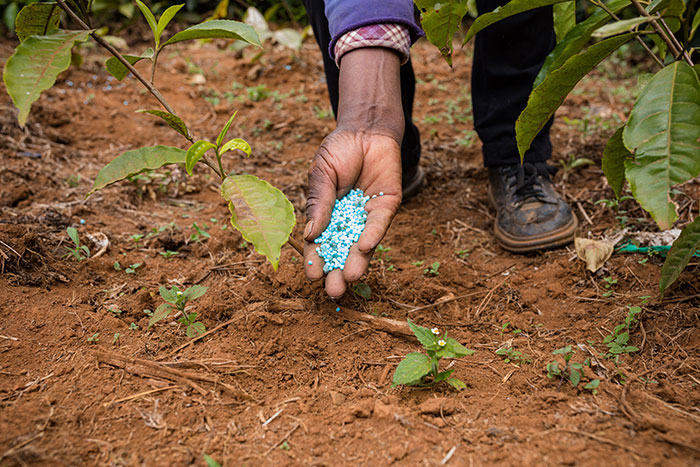



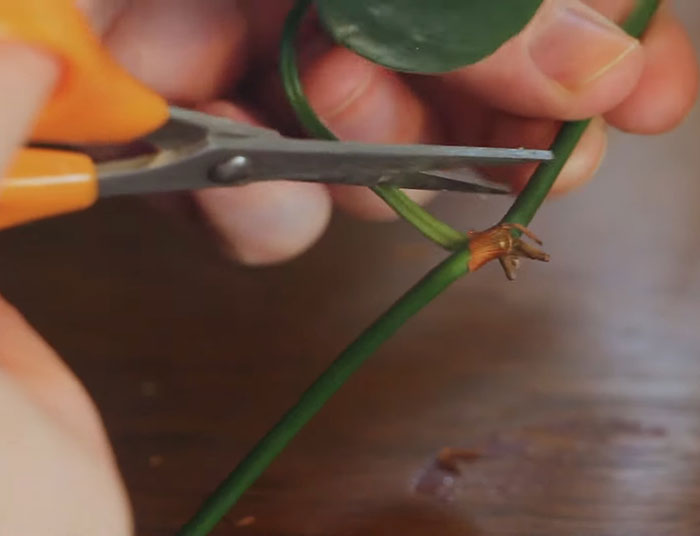







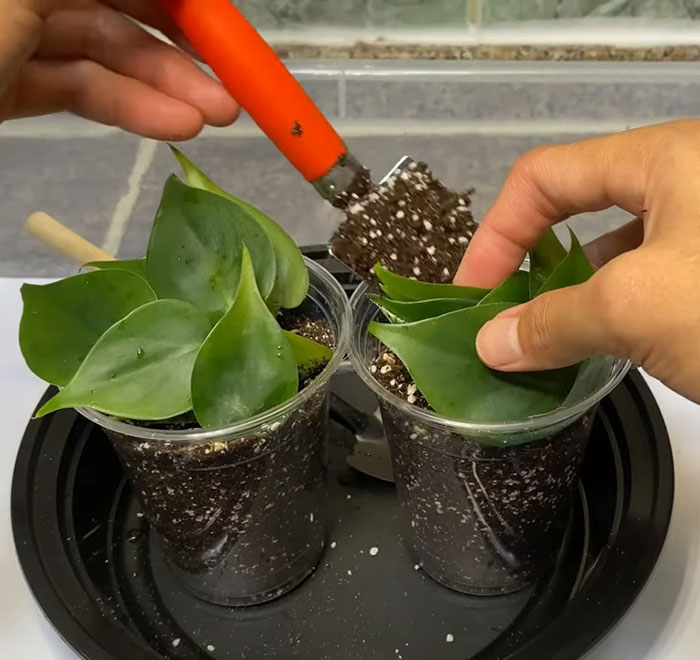
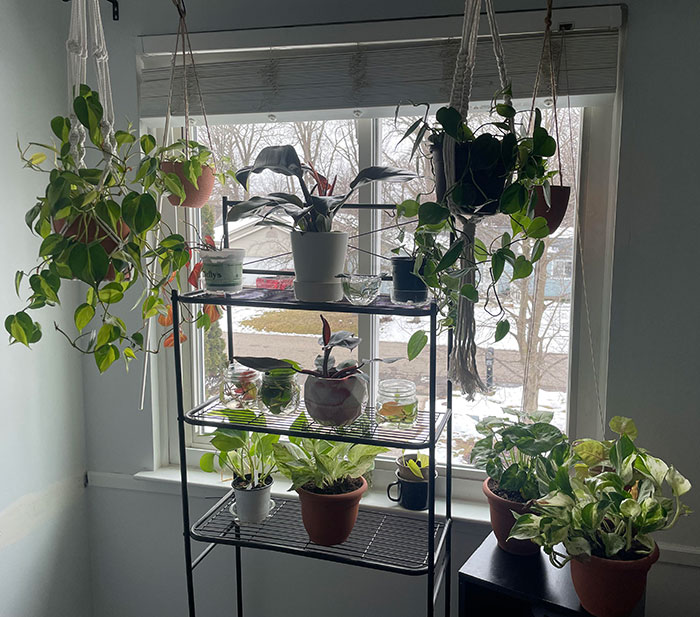







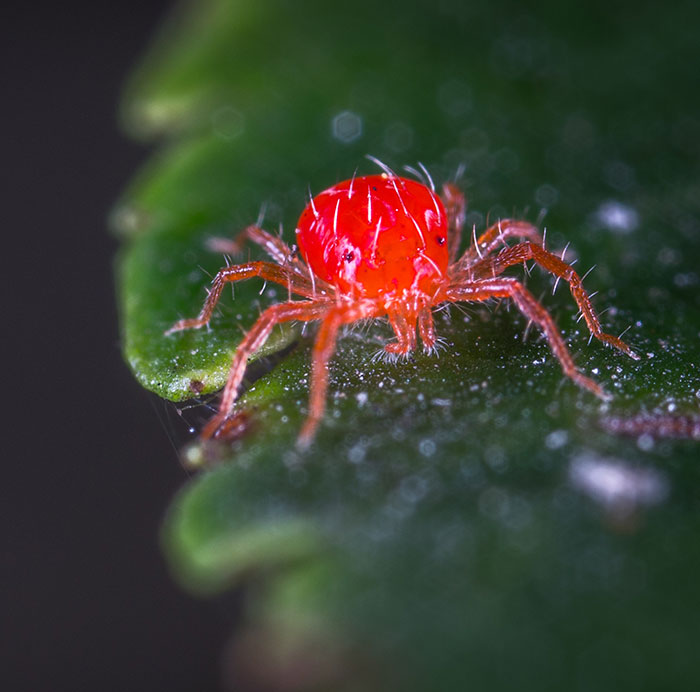



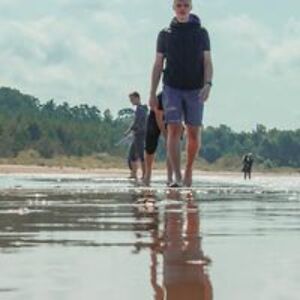












































16
3